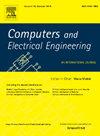Collaborative and distributive intelligence in radar systems: Enhancing electronic jamming discrimination
IF 4
3区 计算机科学
Q1 COMPUTER SCIENCE, HARDWARE & ARCHITECTURE
引用次数: 0
Abstract
The precise discrimination of radar jamming signals is decisive in executing effective electronic counter-countermeasures (ECCM). Data-driven deep learning (DL) models have proven effective for this task, but challenges persist in addressing critical real-world issues such as limited data sharing, time- and location-dependent variations in hostile interferences, real-time adaptability to evolving jamming tactics, and imbalanced data distribution. In this paper, a novel approach is proposed that employs federated learning (FL) for training radar signal jamming classifiers individually on a set of devices, aggregating, sharing, and continuously updating the knowledge. This approach enables privacy-preserving training, eliminating access to client-local data or centralized data storage, ensuring knowledge sharing, and resilient response to jamming. This work delineates a collaborative and distributive learning framework for radar jamming signals, employing two hybrid models within an FL platform. A deep spectra spatio-temporal discriminator (DSSTD) and a shallow spectra-temporal feed-forward self-attention-driven discriminator (SSTFSAD) network have been implemented as classifiers on a distributed arrangement. The time–frequency attributes of radar jamming signals as 2D-scalograms individually train these models across remote FL nodes. Extensive evaluations are conducted in FL environments under independently and identically distributed (IID) and non-IID data configurations, simulating real-world settings with diverse data distributions. Experimental results demonstrate that both proposed approaches are effective, with FL-driven DSSTD outperforming FL-driven SSTFSAD by 7.7% in IID and 6.8% in non-IID setups, even at -5 dB JNR. These results highlight the robustness and adaptability of the FL-driven DSSTD model, offering a significant advancement in radar jamming signal discrimination for electronic warfare applications.
雷达系统中的协同和分布式智能:增强电子干扰识别
雷达干扰信号的准确识别是实施有效电子对抗(ECCM)的关键。数据驱动的深度学习(DL)模型已被证明对这项任务是有效的,但在解决现实世界的关键问题方面仍然存在挑战,例如有限的数据共享、敌对干扰的时间和位置依赖变化、对不断发展的干扰策略的实时适应性以及数据分布不平衡。本文提出了一种新的方法,利用联邦学习(FL)在一组设备上单独训练雷达信号干扰分类器,并进行知识的聚合、共享和持续更新。这种方法可以实现保护隐私的培训,消除对客户端本地数据或集中数据存储的访问,确保知识共享,以及对干扰的弹性响应。这项工作描述了雷达干扰信号的协作和分布式学习框架,在FL平台中采用了两种混合模型。将深光谱时空鉴别器(DSSTD)和浅光谱时空前馈自注意驱动鉴别器(SSTFSAD)网络作为分类器实现在分布式结构上。雷达干扰信号的时频属性作为二维尺度图在远程FL节点上单独训练这些模型。在独立和同分布(IID)和非IID数据配置下的FL环境中进行了广泛的评估,模拟具有不同数据分布的现实环境。实验结果表明,这两种方法都是有效的,即使在-5 dB JNR下,fl驱动的DSSTD在IID下的性能比fl驱动的SSTFSAD高7.7%,在非IID设置下也比fl驱动的SSTFSAD高6.8%。这些结果突出了fl驱动的DSSTD模型的鲁棒性和适应性,为电子战应用中的雷达干扰信号识别提供了重大进展。
本文章由计算机程序翻译,如有差异,请以英文原文为准。
求助全文
约1分钟内获得全文
求助全文
来源期刊

Computers & Electrical Engineering
工程技术-工程:电子与电气
CiteScore
9.20
自引率
7.00%
发文量
661
审稿时长
47 days
期刊介绍:
The impact of computers has nowhere been more revolutionary than in electrical engineering. The design, analysis, and operation of electrical and electronic systems are now dominated by computers, a transformation that has been motivated by the natural ease of interface between computers and electrical systems, and the promise of spectacular improvements in speed and efficiency.
Published since 1973, Computers & Electrical Engineering provides rapid publication of topical research into the integration of computer technology and computational techniques with electrical and electronic systems. The journal publishes papers featuring novel implementations of computers and computational techniques in areas like signal and image processing, high-performance computing, parallel processing, and communications. Special attention will be paid to papers describing innovative architectures, algorithms, and software tools.
 求助内容:
求助内容: 应助结果提醒方式:
应助结果提醒方式:


